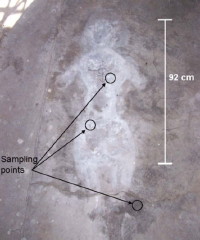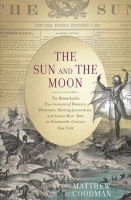Stalin, black orchids, and Eva Peron —
Lorena writes to ask:
You seem to know a lot about hoaxes so....I am doing some
research, and I was asked if the story about Stalin sending black orchids
to Eva Peron's funeral are a hoax. Problem is, I can't even find stories
about it at all. Have you ever heard this?
I'm flattered Lorena thinks I might be knowledgeable enough to have the answer to this, but unfortunately I've never heard the story before and can't find any references to it. In a July 28, 1952 Associated Press article, "Mile-Long Lines View Remains," I found a reference to the flower arrangements at Peron's funeral:
The blonde wife of President Juan D. Peron lay in state in the hall of the labor ministry, in a glass-topped casket of mahogany, draped in white orchids, awaiting a full military funeral tomorrow afternoon. Tons of lilies, roses and carnations packed the hall and overflowed into the streets outside. Crowds of somberly dressed sober-faced mourners were first admitted to the improvised chapel Sunday afternoon and continued in an endless procession throughout the night and morning.
No mention of black orchids or Stalin.
A recent article in the journal
International Affairs ["Stalin Meets the Argentine Ambassador," 3(52), 2006, 175-181], discusses a 1953 meeting between Stalin and Leopoldo Bravo, the Argentine ambassador in Moscow. During the course of their conversation Stalin apparently mentioned his interest in Eva Peron:
Other issues were also discussed during the conversation. Stalin was particularly interested in why Peron's wife—Eva Peron—was so popular, was it her personality, or the fact that she was the president's wife. Not an easy question to answer, particularly since Eva had died six months before. The ambassador's reply implied that she was popular for both reasons.
But again, no mention of Stalin having sent black orchids to her funeral.
I should also point out that while there are plants commonly referred to as "black orchids," they're not actually black. They're a dark maroon or brown. There is no such thing as an orchid that is truly black. The Auckland Museum is currently hosting an exhibit,
Wonderland: The Mystery of the Orchid.
According to them:
A few species of orchids have acquired the name "Black Orchid" by virtue of their very dark intense colour, while not black, which tends to the dark brown and maroon.
One of these is the Australian native orchid, Cymbidium canaliculatum var. sparkesii, a form of C. canaliculatum that has rich intense dark maroon flowers, with a touch of white and dark purple on the labellum. A species of the drier open eucalyptus forest, it grows high in the trees from hollow branches and crevices. The spikes are produced in numbers and bear many deep maroon flowers which are fragrant.
The original "black orchid", Trichoglottis brachiata (or T. philippinensiis var. brachiata), an erect monopodial species that likes to climb, is an entirely different type of orchid from the perching Cymbidium. T. brachiata is native to Borneo, Philippines and Sumatra and the many flowers are produced at the nodes along the stem. Each flower is up to 5 cm across, a rich velvety dark maroon, the lip prominently marked purple. The flowers are fragrant and long lived.







 A new salvo has been fired in the ongoing controversy about whether the anthropologist Margaret Mead was "hoaxed" during her research in Samoa in 1925. I've got a brief article about the controversy in the hoax archive. To summarize: Mead traveled to Samoa, interviewed some teenage girls about their sexual behavior, and concluded that Samoan culture had very relaxed, easygoing attitudes about sex. Almost sixty years later Derek Freeman challenged her findings and claimed that the teenage girls had told her wild tales, which she had been gullible enough to believe. Freeman's claims were partially based on the testimony of one of Mead's interviewees, Fa'apua'a, whom he tracked down in Samoa.
A new salvo has been fired in the ongoing controversy about whether the anthropologist Margaret Mead was "hoaxed" during her research in Samoa in 1925. I've got a brief article about the controversy in the hoax archive. To summarize: Mead traveled to Samoa, interviewed some teenage girls about their sexual behavior, and concluded that Samoan culture had very relaxed, easygoing attitudes about sex. Almost sixty years later Derek Freeman challenged her findings and claimed that the teenage girls had told her wild tales, which she had been gullible enough to believe. Freeman's claims were partially based on the testimony of one of Mead's interviewees, Fa'apua'a, whom he tracked down in Samoa. A new play opening at Chicago's Steppenwolf Theater, Fake by Eric Simonson, is based on the Piltdown Man hoax. It looks pretty good, but I can't find any indication if there are plans for it to go on tour and come to San Diego.
A new play opening at Chicago's Steppenwolf Theater, Fake by Eric Simonson, is based on the Piltdown Man hoax. It looks pretty good, but I can't find any indication if there are plans for it to go on tour and come to San Diego. A stain, shaped like a human body, can be found on the concrete floor of the Athens Mental Health and Retardation Center in Athens Ohio. According to legend, this stain marks the location where the body of a patient, Margaret Schilling, lay undiscovered for several weeks back in 1979.
A stain, shaped like a human body, can be found on the concrete floor of the Athens Mental Health and Retardation Center in Athens Ohio. According to legend, this stain marks the location where the body of a patient, Margaret Schilling, lay undiscovered for several weeks back in 1979. In its current issue, the Journal of Biogeography has published an article whose authors use ecological niche modelling software to predict the distribution of Sasquatch in western North America. The authors write:
In its current issue, the Journal of Biogeography has published an article whose authors use ecological niche modelling software to predict the distribution of Sasquatch in western North America. The authors write: My doctoral dissertation was partially on the subject of the Great Moon Hoax of 1835. I never finished writing the dissertation, but I did spend a LOT of time researching the moon hoax, and I always thought that it would make a great subject for a general-interest book -- using the moon hoax as a window on New York City and America in 1835.
My doctoral dissertation was partially on the subject of the Great Moon Hoax of 1835. I never finished writing the dissertation, but I did spend a LOT of time researching the moon hoax, and I always thought that it would make a great subject for a general-interest book -- using the moon hoax as a window on New York City and America in 1835.